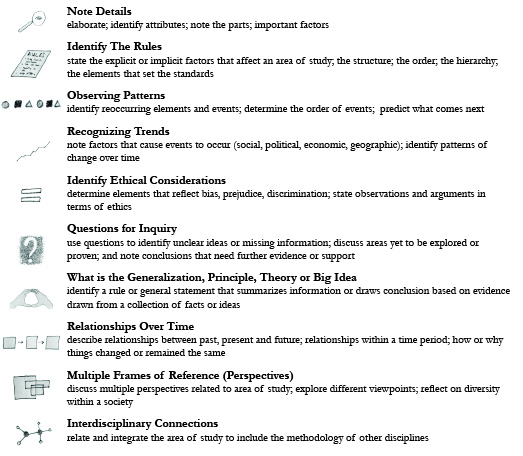Depth and Complexity with Frame of Reference
The Depth and Complexity model provides depth of thinking as a critical thinker, as a problem solver and considerations for all aspects of multiple perspectives with collaborations and understanding.
 Note Details
Note Details
elaborate; identify attributes; note the parts; important factors- Identify The Rules
state the explicit or implicit factors that affect an area of study; the structure; the order; the hierarchy; the elements that set the standards - Observing Patterns
identify reoccurring elements and events; determine the order of events; predict what comes next - Recognizing Trends
note factors that cause events to occur (social, political, economic, geographic); identify patterns of change over time - Identify Ethical Considerations
determine elements that reflect bias, prejudice, discrimination; state observations and arguments in terms of ethics - Questions for Inquiry
use questions to identify unclear ideas or missing information; discuss areas yet to be explored or proven; and note conclusions that need further evidence or support - What is the Generalization, Principle, Theory or Big Idea
identify a rule or general statement that summarizes information or draws conclusion based on evidence drawn from a collection of facts or ideas - Relationships Over Time
describe relationships between past, present and future; relationships within a time period; how or why things changed or remained the same - Multiple Frames of Reference (Perspectives)
discuss multiple perspectives related to area of study; explore different viewpoints; reflect on diversity within a society - Interdisciplinary Connections
relate and integrate the area of study to include the methodology of other disciplines

